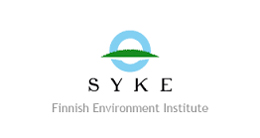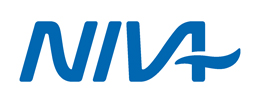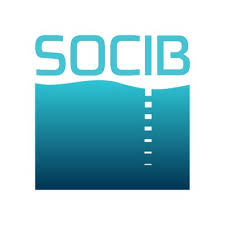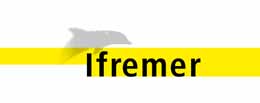Light absorption in the water column
Type of resources
Topics
INSPIRE themes
Keywords
Contact for the resource
Provided by
Formats
Representation types
Scale
-

SYKE Alg@line project in the Baltic Sea monitors the state of the sea and detects algal blooms. Several millions of data points are collected annually from the Baltic Sea, using a fleet of 5-7 ferries. Two best equipped ferries offered in TNA are m/s Silja Serenade, which travels daily between Helsinki and Stockholm (Sweden) and m/s Finnmaid, which travels approx. twice a week from Helsinki to Travemünde (Germany) and back. Both ferries are equipped with flow-through system with thermosalinograph, chlorohyll, phycocyanin and CDOM fluorometers, turbiditymeter and refrigerated.sampling unit providing discrete water samples for laboratory analyses (e.g. microscopy, flowCAM, nutrients, optical analysis, experimental work). Additional sensors e.g. for primary production (FRRF) and light reflectance are used periodically, new sensors for light absorption and pCO2 will be soon implemented. Data can be retrieved in real time using satellite or GSM connection (basic sensors) or downloaded during harbour visits (additional sensors). Alg@line data is available e.g. through MyOcean and has also been delivered to users based on mutual cooperation, including scientific advice. Algaline ships maintained by SYKE host measurement systems from other countries, and periodically they are used as platforms for international short-term studies.
-

The oceanographic data from the Oslofjord at 1 m and 60 m are in the range of a salinity of ~10-34 and a temperature range of -1 to 20 °C. Other sensor data that can be available are Chl-a fluorescence, turbidity, pH and pCO2. The station will give access to the above data for doing research on biogeochemistry and climate. NIVA staff will support via data QC and setup of remote data access.
-

The SOCIB Glider Facility is an example of new technologies being progressively implemented in coastal to open ocean regions allowing autonomous and sustained high-resolution monitoring of specific areas. SOCIB-GF is fully operational in JERICO-NEXT and since 2006 has accomplished 64 missions, 1.244 days in water, 14.555 nm navigated with 39.378 vertical profiles collected. SOCIB-GF human team is composed out of 2 full-time engineers, 1 full-time technician, 2 part-time field-technicians (for at sea operations), 2 part time engineers (for glider data management) and 2 part-time experienced scientists. An intense and fruitful collaboration with IMEDEA (CSIC-UIB) team also exists since the origin of glider operations. The fleet in 2016 consists of 7 Slocum gliders and 2 iRobot Seagliders, equipped for collecting both physical (T, S) and biogeochemical data (fluorescence, oxygen, etc.) at high spatial resolutions (2km). SOCIB-GF includes a pressure chamber (1.000 m) as well as ballasting and operations labs. It also has access to other SOCIB facilities such as (1) ETD (Engineering & Technology Development): Hurricane Zodiac 9.2 m RIB, Lab-Van and harbour warehouse; (2) SOCIB-R/V: a 24 m coastal catamaran and (3) Data Center: including data management, public repository, on-line web-based platform tracker -for mission monitoring- and development of tools such as the glider processing toolbox (Troupin et al., Methods in Oceanog., 2015, - freely available scripts available at https://github.com/socib/glider_toolbox).
-

Data access will be provided in near real time and in delayed mode. Parameters include salinity, temperature, chlorophyll fluorescence, turbidity, oxygen, pH, pCO2, wave height and direction, current speed and direction and also in air data on temperature, irradiation and air pressure. Also data from laboratory analyses of water samples are included, e.g. chlorophyll, salinity, CDOM, coloured dissolved organic matter, phytoplankton abundance and biodiversity. Data is distributed through the Baltic Operational Oceanographic System, BOOS and through the Swedish Oceanographic Data Centre at SMHI. Data is accessible through download and through web services. Data and metadata is delivered through SMHI systems for distributing oceanographic data, e.g. http://sharkdata.smhi.se according to EU standards and procedures.
-

SYKE Alg@line project in the Baltic Sea monitors the state of the sea and detects algal blooms. Several millions of data points are collected annually from the Baltic Sea, using a fleet of 5-7 ferries. Two best equipped ferries offered in TNA are m/s Silja Serenade, which travels daily between Helsinki and Stockholm (Sweden) and m/s Finnmaid, which travels approx. twice a week from Helsinki to Travemünde (Germany) and back. Both ferries are equipped with flow-through system with thermosalinograph, chlorohyll, phycocyanin and CDOM fluorometers, turbiditymeter and refrigerated sampling unit providing discrete water samples for laboratory analyses (e.g. microscopy, flowCAM, nutrients, optical analysis, experimental work). Additional sensors e.g. for primary production (FRRF) and light reflectance are used periodically, new sensors for light absorption and pCO2 will be soon implemented. Data can be retrieved in real time using satellite or GSM connection (basic sensors) or downloaded during harbour visits (additional sensors). Alg@line data is available e.g. through MyOcean and has also been delivered to users based on mutual cooperation, including scientific advice. Algaline ships maintained by SYKE host measurement systems from other countries, and periodically they are used as platforms for international short-term studies.
-

MOLIT is designed for in situ monitoring in large rivers, estuaries and coastal areas. It is used for since many years in the Loire estuary where a two level sampling, surface and 10 m depth, is performed with multiparameter measurements (T, DO, salinity, turbidity, fluorescence). Nevertheless, if needed, the MOLIT hydraulic system can perform sampling at 4 different levels. The whole hydraulic sampling system is protected from bio-fouling by an efficient seawater electrolysis scheme; this bio-fouling protection can be used to protect the tested instruments. The data are available by a wireless communication system or can be stored on board.
-

COSYNA (Coastal Observation System for Northern and Arctic Seas) is an operational coastal monitoring, forecasting and information system for the North Sea composed by fixed platforms, FerryBoxes, gliders and HF-radar systems. It is being developed by institutes of the German Marine Research Consortium (KDM) and collaborating institutions and is operated by the HZG Research Centre. The infrastructure represents an investment of 9 M €. It was build up since 2007 and is fully operational since 2012. COSYNA_SFB is a Stationary FerryBox system, including self-cleaning features, installed in a container at the mouth of the Elbe River equipped with sensors T, C/S, turbidity, DO, pH, chlorophyll-afluorescence, CDOM fluorescence, nutrients (NOx, NO2, PO4, SiO2) and a cooled water sampler.
-

The seabed cabled observatory EMSO-Molène was deployed off shore 2 km north of Molène in the marine protected area “Iroise Marine Park”. MOLENE is an EMSO testing site at depth 18 meters, dedicated to sensors and equipment in-situ and long-term qualification. The instrumental module is a removable device that includes the electronic core of the observatory: the “Node” and the “Junction Box”. The Node inputs an optical signal and converts it into electrical. On the node output, the Junction Box relays instructions, collects data, protects the equipment in case of electrical malfunction and provides failure warnings. Remote control of the instruments and data recovery. Network throughput: 1 Gbit/s between the sensors and the relay station, restricted between the island and Brest. A land-based server transmits data to the subscriber. Data time stamping: GPS clock, NTP/PTP Network, Network Attached Storage. Available for the instruments: 6 identical inputs (Subconn MCBH12M, Micro Bulkhead, 12 contacts), voltage: 15V and 48V, power supplied for the 6 connections: 75 W under 15V and 75W under 48V. Seawater physico-chemical measurements are performed by the platforms on the site (high frequency sampling).
-

Utö is one of the main observing sites of FMI. The Island can be reached 4 times a week by free public transport and has a hotel with conference facilities. Marine observations are mainly scientistsoperated, with strong support from FMI observing services unit. Infrastructure includes the following observations: • Surface waves and temperature; currents (-23 m … -0.5 m); temperature, salinity, turbidity, chlorophyll, O2 (-5 m); Ice cover; pCO2; sea-atmosphere CO2-flux; • Temperature, salinity, O2, nutrient profiles (-80 m…0 m) during open sea period only; • A continuous water flow from the sea (possible to install new instruments utilizing ~ 5 lpm sea water/instrument) • Atmospheric CO2- and CH4-concentrations; Meteorology: wind speed and direction, temperature, PAR, diffuse and global radiation, weather camera; atmospheric trace gases; physical, chemical and optical properties of aerosol particles.
-

ISMAR OS is a system around Italy and is composed by 11 fixed platforms, HF radars, a glider. The installations proposed for TNA embrace different marine environments and can be used independently. SiCO is a twin-mooring system placed is in a key area connecting the Eastern and Western Mediterranean Sea. Equipped with current profilers and CTD probes, it continuously monitor surface and intermediate exchange of water masses and properties between the basins. A pCO2 probe isinstalled in SiCO1 near the bottom to widen the contribution of the observatory to climate studies and ocean acidification research. The site is part of the CIESM Hydro-Changes Programme.
 Metadata catalogue
Metadata catalogue